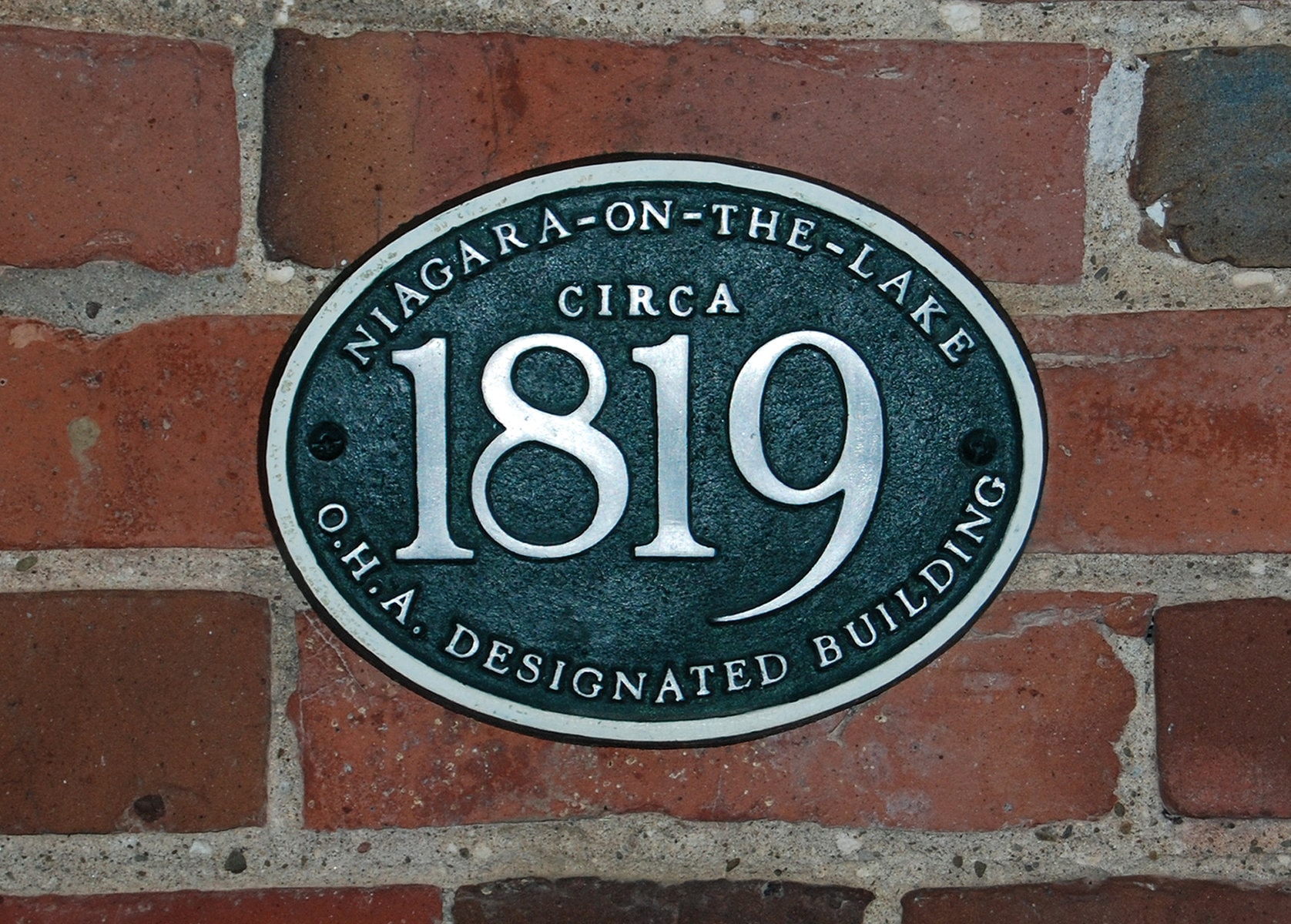For its size and population, Niagara-on-the-Lake has a tremendous wealth of historic houses that pre-date 1925.
Still, despite this treasure trove, comparatively few of these residences have been heritage designated.
Before we ask “Why is that?” it may be worthwhile to put a little definition around designation.
There are two classifications of residential designation in Ontario: Part IV and Part V.
The former is designation of an individual building, while the latter is applied to any building located within a provincially recognized heritage conservation district.
So, if you happen to own a property in Old Town that falls inside the boundaries of the south side of Prideaux/Byron to the north side of Johnson/Platoff between Gate Street on the east and Wellington on the west (the geography of which is woefully inadequate in my opinion), your building is designated under Part V.
Now, prior to the Ford government’s Bill 23 legislation coming into effect last November, a property that met one (or more) of the nine criteria defined in Ontario’s Heritage Act, could have received a Part IV designation.
Of course, the provincial government raised that bar to require that two (or more) of the criteria be met because Mr. Ford apparently believes it should be more difficult to preserve our history.
The criteria are as follows. The property has:
- Design value or physical value because it is a rare, unique, representative or an early example of a style, type, expression, material or construction method.
- Design value or physical value because it displays a high degree of craftsmanship or artistic merit.
- Design value or physical value because it demonstrates a high degree of technical or scientific achievement.
- Historical value or associative value because it has direct associations with a theme, event, belief, person, activity, organization or institution that is significant to a community.
- Historical value or associative value because it yields, or has the potential to yield, information that contributes to an understanding of a community or culture.
- Historical value or associative value because it demonstrates or reflects the work or ideas of an architect, artist, builder, designer or theorist who is significant to a community.
- Contextual value because it is important in defining, maintaining or supporting the character of an area.
- Contextual value because it is physically, functionally, visually or historically linked to its surroundings.
- Contextual value because it is a landmark. O. Reg. 569/22, s. 1.
When a Part IV designation is filed and recognized by the Ontario Heritage Trust (an agency of the Ministry of Citizenship and Multiculturalism), the documentation specifically identifies the heritage attributes of the property that met the aforementioned criteria.
Compared to a Part V designation, which applies to a geography rather than specific building attributes, this is significantly more beneficial for a property owner since it identifies the heritage limitations associated with any proposed (contemplated) alterations or changes to the property.
There is no cost associated with having your property designated and designation provides the fundamental legal platform for a municipality to use in awarding any heritage incentives, including grants, planning incentives and property tax rebates.
That said, let’s return to our original question: Why don’t more people designate their property?
From many conversations with property owners on this issue, I have drawn the conclusion that it boils down to a simple lack of knowledge compounded by rumour and misinformation.
For example, many folks are under the impression that a heritage designation has an adverse impact on resale property values.
In fact, nothing could be further from the truth.
Multiple research studies conducted in both Canada and the United States have conclusively shown the rate of appreciation on stand-alone designated homes is at least equivalent to and generally above that of the market. And, during a market downturn, the property depreciates at a slower rate than the average house.
Further, when located within a heritage district, the designated property will tend to appreciate (gain value) between 4 per cent and 12 per cent more than other homes during any given real estate bull market period.
Then there is a fear of “loss of control” over what the owner can do to the house in terms of renovations, additions, etc.
To be fair, there is some of that. You will need to go before the municipal heritage committee to outline your proposed alterations, gain the committee’s endorsement and obtain a heritage permit prior to proceeding.
However, it is my experience that a properly prepared and documented proposal that respects the defined heritage aspects of the building seldom, if ever, fails to be granted a permit.
Of course, yanking out heritage windows and replacing them with modern vinyl inserts is unlikely to be approved – but, why would you want to?
There are solutions on the market that will give you efficiency while preserving the historic character without breaking the bank.
Most people purchase an old house because they fall in love with its charm, history and character. Designation serves to preserve the things you love for future generations while delivering benefits.
Brian Marshall is a NOTL realtor, author and expert consultant on architectural design, restoration and heritage.









